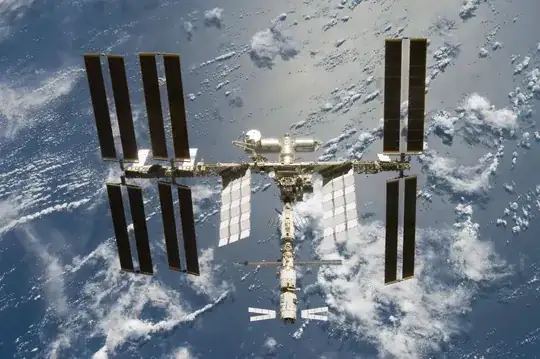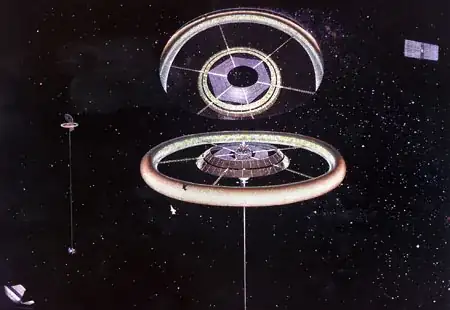This is more of a comment, but because of the length I'm putting it here.
While the size of the space station determines the angular distance that it occupies in the sky, the main reason that it would be visible at all has to do with the reflective surfaces which might be attached to it. The ISS is quite visible to ground viewers becsue the sun reflects off the vast sail like solar panels which provide power to the station.
A large space colony will have a lot more reflecting surfaces either as solar panels, or as mirrors to bounce sunlight into the colony. A Stanford Torus (or a series of torii as you propose) is generally marked by a large "top hat" mirror reflecting sunlight into the central axis, where it is further reflected by mirrors into the colony itself (through a giant slot cut into the radiation shielding facing into the axis)

Since the mirror itself is the diameter of the torus (one kilometre in your case), it will certainly be highly visible, and the one thing which attracts attention long before the actual station itself. Under some circumstances, the glare from the mirror might actually obscure the colony itself from viewers on Earth, so ground observers will see an extremely bright "star" passing overhead, rather than the colony itself.

